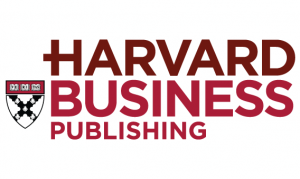eHarmony Strategy Case

Mike Reeser
Mirella Mendez
Alyssa Montgomery

The eHarmony Rises
Differentiation brings Rapid Growth
- Personality Profile - 250 questions
- Matching Algorithm
- Guided Communication
Competitors react to success



By 2007, eHarmony faced competition from:
Waldorf & Steiner Strategize
- Defend eHarmony's position
- Broaden the customer base by including casual daters
- Grow new business based on R & D
- Rapid geographic expansion

So the question is...
Which one of the 4 strategies discussed by
Greg Waldorf and Greg Steiner should be
adopted by eHarmony to combat growing competition?
Recommendation
- eHarmony's R & D - based formula will attract casual segment
- Opening to new segments will increase membership
eHarmony should broaden its customer base to include more casual daters to fight growing competition
eHarmony possesses a patented matching algorithm that works

- By expanding to the casual dating segment, eHarmony brings positive brand recognition
- Years of research have revealed what factors make up a happy couple
- Couples that meet on eHarmony are happier than "in the wild" couples
- 236 eHarmony members marry every day in the US
eHarmony has invested significantly in R&D to develop new products and services

- Team of research psychologists dedicated to discover insights in:
- Characteristics & behaviors that predict happy couples
- Successful life transitions
- Study of love
- Biological, sociological, and neurological aspects
- eHarmony is better equipped to discover casual dating trends
"Fast Track" communication method caters to the casual user

- The "Fast Track" option of communication facilitates casual interaction
- Guided Communication limits users freedom
- When surveyed, users requested "Fast Track" 3x more than Guided Communication
-
"Fast Track" connects users with more matches
- More potential matches translates to renewed subscriptions
- Also higher satisfaction rate
Recommendation
- eHarmony's R & D - based formula will attract casual segment
- Opening to new segments will increase membership
eHarmony should broaden its customer base to include more casual daters to fight growing competition
There is no longer a stigma associated with online dating
Sociological shift has expanded the online dating industry

- Because online dating is socially acceptable, more people are willing to participate
- Online dating industry has grown 154% in the past decade*
- Online dating is the third largest service provided on the internet, following music & games*
CwebNews "Online Dating Statistics"
Expanding the customer base in a growing industry can lead to a greater market share

- 44% of people are unmarried age 18 and older*
- Increase in online dating users is an opportunity for new subscribers
- Expanding the customer base to include medium-relationship-minded people
- Capture a larger market
- Accept more applicants instead of denying access and allowing competitor flight
U.S. Census: 2011
A broader customer base will increase revenue
- Since inception it has denied membership to at least "1 million people who wanted to be paying members"
- Cost: $10 million per year
Original Question...

Which one of the 4 strategies discussed by Greg Waldorf and Greg Steiner should be adopted by eHarmony to combat growing competition?
Recommendation
- eHarmony's R & D - based formula will attract casual segment
- Opening to new segments will increase membership
eHarmony should broaden its customer base to include more casual daters to fight growing competition